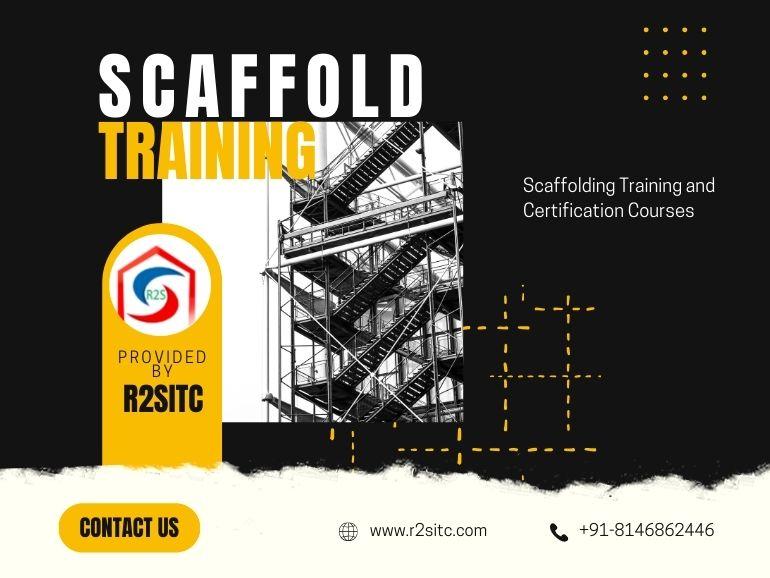ਉੱਚਾਈ ਤੇ ਕੰਮ ਕਰਨ ਲਈ ਮੁਖਤੀਬਾਜ਼ ਨਿਰਦੇਸ਼ : ਉੱਚਾਈ ਤੇ ਕੰਮ ਕਰਨ ਵਾਲੇ ਕਰਮਚਾਰੀਆਂ ਲਈ ਟਾਪ 10 ਸੁਰੱਖਿਆ ਸਲਾਹ
ਉੱਚਾਈ ਤੇ ਕੰਮ ਕਰਨ ਵਾਲੇ ਕਰਮਚਾਰੀਆਂ ਲਈ ਸੁਰੱਖਿਆ ਨੂੰ ਅਮਲ ਕਰਨਾ ਹੁਣ ਹੀ ਸੀਰਿਆਲ ਹੈ, ਕਿਉਂਕਿ ਇਸ ਕਰਵਾਈ ਦੇ ਵੇਲੇ ਹਾਏ ਦੀ ਸੁਰੱਖਿਆ ਨਾ ਨਾਲ ਖੇਡਣਾ ਨਾਨਾ ਨਾਲ ਹੈ। ਹੇਠਲੇ ਲੋਕਾਂ ਦੀ ਸੁਰੱਖਿਆ ਸਲਾਹ ਤੁਹਾਨੂੰ ਛੱਤ ਉੱਪਰ ਕੰਮ ਕਰਨ ਲਈ ਮੁਖਤੀਬਾਜ਼ ਨਿਰਦੇਸ਼ ਪ੍ਰਦਾਨ ਕਰਦੀ ਹੈ।
1. ਸੁਰੱਖਿਆ ਪ੍ਰਸ਼ਿਕਿਤਿ:
ਸੁਰੱਖਿਆ ਪ੍ਰਸ਼ਿਕਿਤਿ ਉੱਚਾਈ ਤੇ ਕੰਮ ਕਰਨ ਵਾਲੇ ਕਰਮਚਾਰੀਆਂ ਲਈ ਅਤਿ ਮਹੱਤਵਪੂਰਨ ਹੈ, ਕਿਉਂਕਿ ਇਹ ਉਨ੍ਹਾਂ ਦੇ ਸੁਰੱਖਿਆ ਅਤੇ ਵਿਤਰਣ ਵਿੱਚ ਅਗਾਂ ਬਢ਼ਾਵਾ ਕਰਦੀ ਹੈ। ਸੁਰੱਖਿਆ ਪ੍ਰਸ਼ਿਕਿਤਿ ਨੂੰ ਨਾਲ ਵਿੱਚ, ਕਰਮਚਾਰੀਆਂ ਨੂੰ ਅਪਣੇ ਕੰਮ ਨੂੰ ਸੁਰੱਖਿਆਤਮ ਅਤੇ ਸੁਰੱਖਿਆਤਮ ਤਰੀਕੇ ਨਾਲ ਪ੍ਰਸ਼ਿਕਿਤ ਕਰਨ ਦੀ ਸਮਝ ਅਤੇ ਸੁਨਿਸ਼ਚਿਤ ਕਰਦੀ ਜਾਂਦੀ ਹੈ ਕਿ ਉਨ੍ਹਾਂ ਕਿਸੇ ਵੀ ਹਾਲਤ ‘ਚ ਕਿਸੇ ਵੀ ਖਤਰੇ ਦੇ ਪ੍ਰਤੀਕਿਰਿਆ ਕਰ ਸਕਦੇ ਹਨ। ਇਸ ਤਰੀਕੇ ਨਾਲ, ਕਰਮਚਾਰੀ ਸੁਰੱਖਿਆ ਨੂੰ ਅਜਿਹਾ ਅਨੁਭਵ ਕਰਦੇ ਹਨ ਜੋ ਉਹਨਾਂ ਦੀ ਸੁਰੱਖਿਆ ਅਤੇ ਸੁਰੱਖਿਆ ਵਿੱਚ ਆਤਮਿਕ ਭਰਾਸ਼ ਅਤੇ ਆਤਮਿਕ ਉਤਸ਼ਾਹ ਬਣਾਉਂਦਾ ਹੈ।
ਸੁਰੱਖਿਆ ਪ੍ਰਸ਼ਿਕਿਤਿ ਸੰਬੰਧਿਤ ਪ੍ਰਮੁੱਖ ਤੱਤਾਂ ਦਾ ਅਧਿਐਨ ਕਰਨਾ ਸੁਰੱਖਿਆ ਪ੍ਰਕਿਰਿਆ ਵਿੱਚ ਸੁਰੱਖਿਆ ਦੀ ਸੁਰੱਖਿਆ ਦੀ ਗੁਣਵਤਾ ਨੂੰ ਸੁਧਾਰਨ ਦੀ ਮਦਦ ਕਰਦਾ ਹੈ। ਇਹ ਪ੍ਰਸ਼ਿਕਿਤਿ ਕਾਰਜ ਦੇ ਨਿਯਮਾਂ ਅਤੇ ਨਿਯਮਾਂ ਨੂੰ ਸੁਧਾਰਨ ਅਤੇ ਅਨੁਸਰਣ ਕਰਨ ਲਈ ਸੁਰੱਖਿਆ ਨਿਯਮਾਂ ਅਤੇ ਨਿਯਮਾਂ ਦੀ ਸੁਧਾਰਣ ਅਤੇ ਅਨੁਸਰਣ ਕਰਨ ਵਾਲੇ ਕਰਮਚਾਰੀਆਂ ਨੂੰ ਸਿਖਾਉਂਦਾ ਹੈ। ਸੁਰੱਖਿਆ ਪ੍ਰਸ਼ਿਕਿਤਿ ਦੀ ਮਦਦ ਨਾਲ, ਕਰਮਚਾਰੀਆਂ ਨੂੰ ਸੁਰੱਖਿਆ ਸੰਸਾਧਨਾਂ ਅਤੇ ਉਪਕਰਣਾਂ ਦੀ ਠੀਕ ਵਰਤੋਂ ਅਤੇ ਸਥਿਰਤਾ ਦੀ ਪ੍ਰਸ਼ਿਕਿਤਿ ਦੀ ਆਵਸ਼ਕਤਾ ਨੂੰ ਸਮਝਣ ਦੀ ਸਹਾਇਤਾ ਮਿਲਦੀ ਹੈ।
2. ਸੰਦ ਅਤੇ ਪਲੇਟਫਾਰਮ ਦੀ ਜਾਂਚ:
ਪਲੇਟਫਾਰਮ ਅਤੇ ਸੰਦ ਦੀ ਸਟੇਡੀਨੈਸ ਅਤੇ ਸੰਭਾਵਨਾਂ ਦੀ ਜਾਂਚ ਕਰਨਾ ਹਰ ਛੱਤ ਉੱਪਰ ਕੰਮ ਕਰਨ ਵਾਲੇ ਕਰਮਚਾਰੀ ਦਾ ਅਤਿ ਮਹੱਤਵਪੂਰਨ ਹਿੱਸਾ ਹੈ। ਇਸ ਦਾ ਮਤਲਬ ਹੈ ਕਿ ਪਲੇਟਫਾਰਮ ਅਤੇ ਸੰਦ ਦੇ ਸਟੇਡੀਨੈਸ ਨੂੰ ਪ੍ਰਥਮਿਕਤਾ ਦਿੱਤੀ ਜਾਣੀ ਚਾਹੀਦੀ ਹੈ ਅਤੇ ਇਸ ਨੂੰ ਨਿਯਮਿਤ ਅਤੇ ਸਥਿਰਤਾ ਨਾਲ ਜਾਂਚਣਾ ਚਾਹੀਦਾ ਹੈ, ਚਾਹੇ ਤੁਸੀਂ ਕਿਥੇ ਹੋਵੋ। ਕਿਸੇ ਵੀ ਨੁਕਸਾਨ ਜਾਂ ਸੰਕੇਤ ਨੂੰ ਤੁਰੰਤ ਰਿਪੋਰਟ ਕਰਨਾ ਬਹੁਤ ਮਹੱਤਵਪੂਰਨ ਹੈ ਤਾਂ ਕਿ ਉਸ ਨੂੰ ਠੀਕ ਕਰਨ ਲਈ ਕੋਈ ਵੀ ਪ੍ਰਯਾਸ ਕੀਤਾ ਜਾ ਸਕੇ। ਇਸ ਤੋਂ ਵਧ ਕੇ, ਜੇ ਕੋਈ ਸੰਦ ਜਾਂ ਸੰਦੂਕ ਅਸਥਿਰ ਅਤੇ ਗੈਰ-ਸੁਰੱਖਿਆ ਹੋਵੇ, ਤਾਂ ਉਸ ਨੂੰ ਵਰਜਿਤ ਕਰਨਾ ਸਮਰੂ ਹੈ ਤਾਂ ਕਿ ਕਿਸੇ ਵੀ ਹਾਲਤ ਵਿੱਚ ਹੋਈ ਦੁਰਘਟਨਾ ਦੀ ਸੰਭਾਵਨਾ ਨੂੰ ਘਟਾਇਆ ਜਾ ਸਕੇ।
3. ਸੁਰੱਖਿਆ ਸੰਸਾਧਨਾਂ ਦੀ ਵਰਤੋਂ:
ਉੱਚਾਈ ਤੇ ਕੰਮ ਕਰਨ ਵਾਲੇ ਕਰਮਚਾਰੀਆਂ ਲਈ ਸੁਰੱਖਿਆ ਸੰਸਾਧਨਾਂ ਦੀ ਵਰਤੋਂ ਬੇਹੱਦ ਮਹੱਤਵਪੂਰਣ ਹੈ, ਜਿਸ ਨਾਲ ਉਹਨਾਂ ਦੀ ਸੁਰੱਖਿਆ ਤੇ ਜੀਵਨ ਨੂੰ ਬਚਾਉਣ ਦੀ ਸੰਭਵਨਾ ਹੁੰਦੀ ਹੈ। ਸੁਰੱਖਿਆ ਉਪਕਰਣ ਜਿਵੇਂ ਕਿ ਸੇਫਟੀ ਹਾਰਨੈਸ, ਸੰਦੂਕ ਅਤੇ ਹੈਂਡਰੇਲੇਜ਼ ਕਿਤਾਬਾਂ ਦੇ ਨਾਲ ਸਿਖਾਈ ਜਾਂਦੀਆਂ ਹਨ ਅਤੇ ਇਨ੍ਹਾਂ ਦੀ ਵਰਤੋਂ ਕਰਕੇ ਕਰਮਚਾਰੀਆਂ ਨੂੰ ਉੱਚਾਈ ਤੇ ਕੰਮ ਕਰਨ ਵਾਲੇ ਮੌਕੇ ‘ਤੇ ਸੁਰੱਖਿਆ ਦੇ ਮਿਆਰ ਨੂੰ ਬਰਕਰਾਰ ਰੱਖਣ ਦੀ ਸਿਖਰਾਤ ਮਿਲਦੀ ਹੈ। ਇਨ੍ਹਾਂ ਉਪਕਰਣਾਂ ਦੇ ਨਾਲ, ਕਰਮਚਾਰੀ ਨੂੰ ਅਤੇ ਸਿਰਫ ਕੰਮ ਕਰਨ ਲਈ ਨਾਲ ਨਹੀਂ, ਬਲਕਿ ਸੁਰੱਖਿਆ ਨੂੰ ਪ੍ਰਮੁੱਖਤਾ ਦਿੰਦੇ ਹਨ ਜਦੋਂ ਉਹ ਉੱਚਾਈ ਉੱਤੇ ਕੰਮ ਕਰਦੇ ਹਨ। ਇਹ ਉਪਕਰਣ ਕਰਮਚਾਰੀ ਨੂੰ ਹਮੇਸ਼ਾ ਸੁਰੱਖਿਆ ਦੀ ਜਾਂਚ ਕਰਨ ਦਾ ਅਨੁਰੂਪ ਹਾਸ਼ਿਆ ਪ੍ਰਦਾਨ ਕਰਦੇ ਹਨ ਅਤੇ ਕਿਸੇ ਵੀ ਸੁਰੱਖਿਆ ਸੰਬੰਧੀ ਪ੍ਰਸਨ ਜਾਂ ਸਮੱਸਿਆਵਾਂ ਨੂੰ ਹੱਲ ਕਰਨ ਦੇ ਲਈ ਇਨ੍ਹਾਂ ਦਾ ਉਪਯੋਗ ਕੀਤਾ ਜਾ ਸਕਦਾ ਹੈ।
4. ਮਿੱਟੀ ਅਤੇ ਸੰਤਰ:
ਸੁਰੱਖਿਆ ਦਾ ਪਹਿਲਾ ਨਿਯਮ ਹੈ ਕਿ ਸੁਰੱਖਿਆ ਦੀ ਚਿੰਤਾ ਕਰਦੇ ਹੋਏ ਸਭ ਤੋਂ ਮੁੱਖ ਹੈਲਮੈਟ ਅਤੇ ਸੰਤਰ ਨੂੰ ਲਾਓ, ਚਾਹਵੇਂ ਤੁਸੀਂ ਕਿਥੇ ਹੋ। ਇਹ ਕਦਰਦਾਨ ਹੈ ਤਾਂ ਕਿ ਤੁਹਾਡੀ ਸੁਰੱਖਿਆ ਨੂੰ ਹਮੇਸ਼ਾ ਲਾਭ ਪ੍ਰਦਾਨ ਹੋ ਅਤੇ ਕੋਈ ਵੀ ਦੁਰਘਟਨਾ ਦੇ ਸਮੱਗਰੀ ਨੂੰ ਨੁਕਸਾਨ ਤੁਹਾਡੇ ਸਰੀਰ ਨੂੰ ਬਚਾ ਸਕੇ। ਹੇਲਮੈਟ ਤੁਹਾਡੇ ਸਿਰ ਅਤੇ ਮਨ ਨੂੰ ਸੁਰੱਖਿਆ ਪ੍ਰਦਾਨ ਕਰਦਾ ਹੈ, ਜਿੱਥੇ ਸੰਤਰ ਤੁਹਾਡੇ ਕਾਨੇ ਅਤੇ ਸਿੱਧੇ ਪੱਖੜਾਂ ਨੂੰ ਸੁਰੱਖਿਆ ਦਿੰਦਾ ਹੈ। ਇਹ ਨਾ ਸਿਰਫ ਕੋਈ ਜਾਦੂਈ ਉਪਕਰਣ ਹੈ, ਬਲਕਿ ਇਹ ਤੁਹਾਡੇ ਜੀਵਨ ਦਾ ਇੱਕ ਮੁਖਰ ਅਤੇ ਜ਼ਰੂਰੀ ਹਿੱਸਾ ਹੈ ਜੋ ਸੁਰੱਖਿਆ ਸੰਬੰਧੀ ਦੁਰਘਟਨਾਵਾਂ ਦਾ ਪਰਿਹਾਸ ਕਰਦਾ ਹੈ। ਇਸ ਲਈ ਹੇਲਮੈਟ ਅਤੇ ਸੰਤਰ ਦੀ ਲਾਓ ਨੂੰ ਸੁਰੱਖਿਆ ਦੀ ਸਭ ਤੋਂ ਮੁੱਖ ਪ੍ਰਵੀਣਤਾ ਦੀ ਅਜਿਹੀ ਹੈ ਕਿ ਇਹ ਹਰ ਇੱਕ ਦੇ ਜੀਵਨ ਨੂੰ ਰੱਖਦੀ ਹੈ ਸੁਰੱਖਿਆ ਅਤੇ ਹਮੇਸ਼ਾ ਤਿਆਰ ਰਹਿਣ ਦਾ ਵਿਚਾਰ ਕਰਦੀ ਹੈ।
5. ਪੁਲੀਸ ਅਤੇ ਗਰਿਫ਼ ਕਾਰਜਾ:
ਜਦੋਂ ਤੁਸੀਂ ਕੋਈ ਸੰਦ ਨੂੰ ਪੁੱਲੀਸ ਅਤੇ ਗਰਿਫ਼ ਕਾਰਜਾ ਵਿੱਚ ਦਾਖਲ ਕਰਦੇ ਹੋ, ਤਾਂ ਤੁਸੀਂ ਸੁਰੱਖਿਆ ਸੰਸਾਧਨ ਨੂੰ ਸਹੀ ਤਰੀਕੇ ਨਾਲ ਵਰਤਦੇ ਹੋ ਤੋਂ ਸਿਖਰ ਹੋਣ ਲਈ ਅਜਿਹੇ ਕਦੇ ਵੀ ਸ੍ਰੋਤ ਲਈ ਮੁੱਖ ਹੈ। ਪੁਲੀਸ ਅਤੇ ਗਰਿਫ਼ ਕਾਰਜਾ ਸੰਬੰਧੀ ਸਹਿਯੋਗੀ ਹੈਂ ਕਿ ਜੇ ਤੁਸੀਂ ਉੱਚਾਈ ‘ਤੇ ਕੰਮ ਕਰ ਰਹੇ ਹੋ ਅਤੇ ਤੁਸੀਂ ਇਲਾਜ਼਼ ਦੀ ਲੋੜ ਹੈ, ਤਾਂ ਤੁਸੀਂ ਉਨ੍ਹਾਂ ਦੀ ਮੱਦਦ ਲੈ ਸਕਦੇ ਹੋ। ਇਲਾਜ਼ ਦੇ ਖਿਲਾਫ ਹੋਣ ਦਾ ਮਤਲਬ ਹੈ ਕਿ ਤੁਸੀਂ ਸੰਦ ਦੀ ਸੁਰੱਖਿਆ ਨੂੰ ਵਾਧੂ ਨਹੀਂ ਸਮਝਦੇ ਅਤੇ ਉਹਨਾਂ ਨੂੰ ਕੋਈ ਅਪਾਰਦਾ ਨਹੀਂ ਸਮਝਦੇ। ਸੁਰੱਖਿਆ ਸੰਸਾਧਨ ਦੀ ਸਹੀ ਤਰੀਕੇ ਨਾਲ ਵਰਤਦਾਨ ਤੁਸੀਂ ਨੁਕਸਾਨ ਦੇ ਪੈਦਾ ਹੋਣ ਨੂੰ ਰੋਕ ਸਕਦੇ ਹੋ ਅਤੇ ਉਸ ਨੂੰ ਸੁਧਾਰ ਕਰਨ ਦਾ ਸੁਨਹਿਰਾ ਮੌਕਾ ਪ੍ਰਦਾਨ ਕਰਦੇ ਹੋ।
6. ਸੰਵੇਦਨਸ਼ੀਲ ਸਾਥੀਆਂ ਦਾ ਸਾਥ:
ਉੱਚਾਈ ਤੇ ਕੰਮ ਕਰਨ ਵਾਲੇ ਕਰਮਚਾਰੀਆਂ ਲਈ ਸੁਰੱਖਿਆ ਨੂੰ ਸਮੀਪਤਿ ਰੱਖਣਾ ਬਹੁਤ ਜ਼ਰੂਰੀ ਹੈ ਕਿਉਂਕਿ ਇਸ ਕਾਮ ਵਿੱਚ ਨੁਕਸਾਨਾਂ ਦਾ ਖਤਰਾ ਹਮੇਸ਼ਾ ਹੋ ਸਕਦਾ ਹੈ। ਅਕਸਰ, ਅਕਸੀਡੈਂਟਸ ਹੋਣ ਦੇ ਸਮਾਂ, ਸਾਥੀਆਂ ਦੀ ਸਹਾਇਤਾ ਇੱਕ ਮਹੱਤਵਪੂਰਨ ਭੂਮਿਕਾ ਅਦਾ ਸਕਦੀ ਹੈ। ਜਦੋਂ ਕਿਸੇ ਸਾਥੀ ਨੂੰ ਕਿਸੇ ਅਕਸੀਡੈਂਟ ਜਾਂ ਖਤਰਾ ਦੀ ਪੇਸ਼ਕਸ਼ੀ ਹੋਵੇ, ਤਾਂ ਉਸ ਦੀ ਸਹਾਇਤਾ ਅਤੇ ਸਮਰਥਾ ਨਾਲ ਕਦੇ ਵੀ ਮੁਸ਼ਕਲ ਸੰਘਰਸ਼ਾਂ ਦਾ ਸਾਹਮਣਾ ਕੀਤਾ ਜਾ ਸਕਦਾ ਹੈ। ਇਸ ਲਈ, ਹਮੇਸ਼ਾ ਸੁਰੱਖਿਆ ਨੂੰ ਗਰਮੀ ਰੱਖਦੇ ਹੋਏ, ਵਿਸ਼ਵਾਸਪੂਰਕ ਅਤੇ ਸੁਰੱਖਿਆ ਵਿੱਚ ਸ਼ਾਮਲ ਹੋਣ ਵਾਲੇ ਸਾਥੀਆਂ ਨੂੰ ਚੁਣਨ ਦੀ ਸਿਫਾਰਿਸ਼ ਕੀਤੀ ਜਾਵੇ। ਇਹ ਸੁਰੱਖਿਆ ਨੂੰ ਗੁਆਣਾ ਕਰਨ ਵਿੱਚ ਮਦਦ ਕਰਦਾ ਹੈ ਅਤੇ ਉਹਨਾਂ ਨੂੰ ਵਧੀਆ ਤਰੀਕੇ ਨਾਲ ਸਮਰਥਾ ਪ੍ਰਦਾਨ ਕਰਦਾ ਹੈ ਤਾਂ ਕਿ ਉਹ ਹੋਰ ਜ਼ਿੰਦਗੀ ਨੂੰ ਸੁਰੱਖਿਆ ਅਤੇ ਸੁਖਾਂਤੀ ਨਾਲ ਜੀ ਸਕਣ।
7. ਮੈਟੀਰੀਅਲ ਦੀ ਸਟੇਡੀਨੈਸ:
ਕੰਮ ਨੂੰ ਆਗੇ ਬਢ਼ਾਉਣ ਦੀ ਪਹਿਲੀ ਗਿਆਨ ਹੈ ਕਿ ਸੁਰੱਖਿਆ ਪ੍ਰਸਤੁਤੀ ਹਮੇਸ਼ਾ ਪਹਿਲਾ ਹੁੰਦੀ ਹੈ। ਇਸ ਨਾਲ ਮੈਟੀਰੀਅਲ ਦੀ ਸਟੇਡੀਨੈਸ ਅਤੇ ਪ੍ਰਮਾਣਿਕਤਾ ਦੀ ਜਾਂਚ ਵੀ ਮਹੱਤਵਪੂਰਨ ਹੈ। ਸੁਰੱਖਿਆ ਸੰਸਾਧਨਾਂ ਨੂੰ ਸਟੇਡੀਨੈਸ ਅਤੇ ਕੰਮਗੀਰੀ ਨਾਲ ਜਾਂਚਣ ਦੀ ਲੋੜ ਹੁੰਦੀ ਹੈ ਤਾਂ ਕਿ ਕਿਸੇ ਹਾਦਸੇ ਦੀ ਸੰਭਵਨਾ ਨੂੰ ਘਟਾਉਣ ਲਈ ਸੁਰੱਖਿਆ ਪ੍ਰਸਤੁਤੀ ਨੂੰ ਮਜ਼ਬੂਤ ਕੀਤਾ ਜਾ ਸਕੇ। ਇਸ ਤੋਂ ਬਾਅਦ, ਕੰਮ ਨੂੰ ਆਗੇ ਬਢ਼ਾਉਣ ਲਈ ਮੈਟੀਰੀਅਲ ਨੂੰ ਸੰਭਾਲਣ ਅਤੇ ਸਟੇਡੀਨੈਸ ਦੇ ਨਿਯਮਾਂ ਅਨੁਸਾਰ ਉਪਯੋਗ ਕਰਨਾ ਅਤੇ ਸਤਿਕ ਕਰਨਾ ਬੜੀ ਪ੍ਰਾਥਮਿਕਤਾ ਹੈ। ਪੁਲੀਸ ਅਤੇ ਗਰਿਫ਼ ਕਾਰਜਾ ਦੀ ਸਫਾਈ ਵੀ ਅਤੇ ਇਹ ਜਾਂਚ ਕਰਨਾ ਕਿ ਕੋਈ ਵੀ ਪ੍ਰਮਾਣੀਕਰਨ ਦੀ ਲੋੜ ਹੈ ਜੋ ਸੁਰੱਖਿਆ ਨੂੰ ਹਮੇਸ਼ਾ ਇਸਤੇਮਾਲ ਕਰਨ ਦੇ ਲਈ ਪ੍ਰਾਪਤ ਹੋਵੇ। ਇਹ ਸਭ ਕੁਝ ਸੁਰੱਖਿਆ ਦੇ ਮੈਟੀਰੀਅਲ ਦੀ ਸੰਭਾਲਣ ਅਤੇ ਉਚਾਈ ‘ਤੇ ਕੰਮ ਕਰਨ ਤੋਂ ਪਹਿਲਾਂ ਕਿਤੇ ਹੋ ਉਸਨੂੰ ਬਿਲਕੁਲ ਸਫ਼ ਅਤੇ ਪ੍ਰਮਾਣਿਕ ਬਣਾਓ।
8. ਸੁਰੱਖਿਆ ਹਿਸਾਬ:
ਆਪਣੇ ਸੁਰੱਖਿਆ ਅਤੇ ਦੂਜਿਆਂ ਦੀ ਸੁਰੱਖਿਆ ਲਈ ਪੁਰਜ਼ੋਰ ਕੀਤਾ ਜਾਂਦਾ ਹੈ ਜਦੋਂ ਤੁਸੀਂ ਉਚਾਈ ਤੇ ਕੰਮ ਕਰਦੇ ਹੋ। ਇਹ ਨਾਲ, ਤੁਹਾਡੀ ਸੁਰੱਖਿਆ ਸਰਤਜ਼ ਅਤੇ ਗੁਆਣਾ ਪਲੀਜ਼ ਕਾਰਵਾਈ ਹੋਵੇ ਸਿਰਫ ਤੁਹਾਨੂੰ ਹੀ ਨਹੀਂ, ਬਲਕਿ ਉਹਨਾਂ ਲੋਕਾਂ ਲਈ ਵੀ ਸੁਰੱਖਿਆ ਨੂੰ ਪ੍ਰਾਥਮਿਕਤਾ ਦਿਖਾਉਣ ਵਾਲੀ ਗਰੰਟੀ ਹੁੰਦੀ ਹੈ ਜਿਨ੍ਹਾਂ ਨਾਲ ਤੁਸੀਂ ਕੰਮ ਕਰ ਰਹੇ ਹੋ। ਸੁਰੱਖਿਆ ਨੂੰ ਪਹਿਚਾਣਣਾ ਅਤੇ ਨੁਕਸਾਨਾਂ ਨੂੰ ਹਿਸਾਬ ਦੇਣਾ ਸੁਰੱਖਿਆ ਦੀ ਪ੍ਰਧਾਨ ਭੂਮਿਕਾ ਹੁੰਦੀ ਹੈ ਜੋ ਕਿ ਕਦੇ ਵੀ ਅਸੁਰੱਖਿਤ ਸਥਿਤੀਆਂ ਤੋਂ ਬਚਨ ਲਈ ਆਵਸ਼ਕ ਹੁੰਦੀ ਹੈ। ਇਸ ਨਾਲ, ਸੁਰੱਖਿਆ ਸੰਬੰਧੀ ਹੋਣ ਲਈ ਜਾਣੋ ਕਿ ਕਿਹੜੇ ਖਤਰੇ ਹਨ ਅਤੇ ਉਨ੍ਹਾਂ ਨਾਲ ਕਿਵੇਂ ਨਿਬਾਹ ਕਰਨਾ ਹੈ ਤਾਂ ਕਿ ਸੁਰੱਖਿਆ ਵਿਚ ਪਰਿਸ਼੍ਰਮ ਕੀਤਾ ਜਾ ਸਕੇ। ਇਸ ਤਰ੍ਹਾਂ, ਇਹ ਨਹੀਂ ਸਿਰਫ ਤੁਹਾਡੇ ਆਪ ਦਾ ਸਿਖਰ ਹੁੰਦਾ ਹੈ, ਬਲਕਿ ਦੂਜਿਆਂ ਦਾ ਭੀ ਸੁਰੱਖਿਆ ਨੂੰ ਪ੍ਰਾਥਮਿਕਤਾ ਦਿਖਾਉਣ ਵਾਲਾ ਸੰਦੇਸ਼ ਦਿਖਾਉਂਦਾ ਹੈ।
9. ਸੁਰੱਖਿਆ ਨੂੰ ਪਹਿਚਾਨੋ:
ਤੁਸੀਂ ਅਪਨੇ ਆਸਪਾਸ ਵੱਲ ਵਿਚਾਰ ਕਰਦੇ ਸਮੇਂ ਨੂੰ ਧਿਆਨ ਰੱਖਣ ਦੀ ਲੋੜ ਹੁੰਦੀ ਹੈ ਕਿ ਕਿੱਥੇ ਸੰਭਾਵਨਾਂ ਹਨ ਜੋ ਤੁਹਾਨੂੰ ਨੁਕਸਾਨ ਦਾ ਸਾਮਨਾ ਕਰਨ ਦਾ ਖ਼ਤਰਾ ਹੋ ਸਕਦਾ ਹੈ। ਇਸ ਨੂੰ ਨਿਰਧਾਰਿਤ ਕਰਨ ਲਈ, ਤੁਸੀਂ ਆਪਣੇ ਕੰਮ ਦੇ ਵੱਲ ਧਿਆਨ ਦੇ ਨਾਲ ਪਲਾਨਿੰਗ ਕਰ ਸਕਦੇ ਹੋ ਕਿ ਕਿਸ ਤਰ੍ਹਾਂ ਉਸ ਨੂੰ ਰੋਕਣ ਅਤੇ ਨੁਕਸਾਨ ਤੋਂ ਬਚਾਉਣਾ ਹੈ। ਜਦੋਂ ਤੁਸੀਂ ਪ੍ਰਤੀਕਿਰਿਆ ਪਲਾਨ ਤਿਆਰ ਕਰਦੇ ਹੋ, ਤਾਂ ਸਭ ਤੋਂ ਪਹਿਲਾਂ ਤੁਸੀਂ ਕਿਸੇ ਵੀ ਹੋਣ ਵਾਲੇ ਹਾਦਸੇ ਨੂੰ ਸਥਿਰਤਾ ਅਤੇ ਸੁਰੱਖਿਆ ਵਿੱਚ ਅਮਲ ਦਿਉ। ਇਸ ਨਾਲ, ਤੁਸੀਂ ਕਿਸੇ ਵੀ ਨੁਕਸਾਨ ਤੋਂ ਬਚਨ ਲਈ ਆਪਣੇ ਸੁਰੱਖਿਆ ਪਲਾਨ ਨੂੰ ਅਮਲ ਵਿੱਚ ਲਾ ਸਕਦੇ ਹੋ। ਇਹ ਆਪਣੇ ਸੁਰੱਖਿਆ ਨੂੰ ਸ਼ੁਰੂ ਤੋਂ ਆਖ਼ਰੀ ਦਾਖ਼ਲ ਤੱਕ ਮੁਕੰਮਲ ਕਰਨ ਦੇ ਲਈ ਮਦਦ ਦੇਣ ਵਾਲਾ ਹੈ।
10. ਸੁਰੱਖਿਆ ਪ੍ਰਸ਼ਿਕਿਤਿ ਅਤੇ ਸ਼ਿਕਾਰ:
ਸੁਰੱਖਿਆ ਪ੍ਰਸ਼ਿਕਿਤਿ ਅਤੇ ਸ਼ਿਕਾਰ ਕਾਰਗਰ ਤਰੀਕੇ ਨਾਲ ਸੁਰੱਖਿਆ ਸਲਾਹ ਅਤੇ ਗਾਈਡਲਾਈਨਾਂ ਦੀ ਪ੍ਰਦਾਨ ਕਰਦੀ ਹੈ ਜਿਸ ਨਾਲ ਕਰਮਚਾਰੀਆਂ ਨੂੰ ਉੱਚਾਈ ਤੇ ਕੰਮ ਕਰਨ ਦੇ ਸਮੇ ਪੂਰੀ ਸੁਰੱਖਿਆ ਅਤੇ ਸੁਰੱਖਿਆ ਦੇ ਪ੍ਰਸ਼ਿਕਿਤ ਤਰੀਕੇ ਨਾਲ ਲੱਭ ਮਿਲ ਸਕਦੀ ਹੈ। ਇਹ ਸੁਰੱਖਿਆ ਪ੍ਰਸ਼ਿਕਿਤਿ ਪ੍ਰੋਗਰਾਮ ਕਰਮਚਾਰੀਆਂ ਨੂੰ ਵਿਵਿਧ ਸੁਰੱਖਿਆ ਮੁੱਦਿਆਂ ਬਾਰੇ ਸਿੱਖਣ ਅਤੇ ਉਨ੍ਹਾਂ ਦੇ ਸਮੂਹ ਸੰਚਾਲਨ ਨੂੰ ਬਿਹਤਰ ਕਰਨ ਦਾ ਅਵਸ਼ਾਸ਼ ਪ੍ਰਦਾਨ ਕਰਦੇ ਹਨ। ਇਸ ਪ੍ਰਸ਼ਿਕਿਤਿ ਨਾਲ, ਕਰਮਚਾਰੀਆਂ ਨੂੰ ਉੱਚਾਈ ਤੇ ਕੰਮ ਕਰਨ ਵਾਲੇ ਸਮੇ ਹੋਣ ਦੀ ਸੁਰੱਖਿਆ ਲਈ ਨਵੇਂ ਔਜ਼ਾਰਾਂ, ਤਾਜ਼ਾ ਤਕਨੀਕੀ ਤੇ ਸੁਰੱਖਿਆ ਮੁੱਦਿਆਂ ਬਾਰੇ ਸਮਝ ਅਤੇ ਸਿੱਖਣ ਦੀ ਮਿਲੇਗੀ ਜੋ ਉਨ੍ਹਾਂ ਦੀ ਸੁਰੱਖਿਆ ਨੂੰ ਵਧੇਰੇ ਤੋਂ ਵਧੇਰੇ ਬਿਹਤਰ ਬਣਾ ਸਕਦੀ ਹੈ। ਇਸ ਤਰ੍ਹਾਂ, ਸੁਰੱਖਿਆ ਪ੍ਰਸ਼ਿਕਿਤਿ ਅਤੇ ਸ਼ਿਕਾਰ ਸਬ ਤੋਂ ਵਧੀਆ ਵਿਧੀ ਹੈ ਜਿਸ ਨਾਲ ਕਰਮਚਾਰੀਆਂ ਨੂੰ ਉਚਾਈ ਤੇ ਕੰਮ ਕਰਨ ਦੇ ਸਮੇ ਸੁਰੱਖਿਆ ਦੀ ਵਧੇਰੇ ਮਦਦ ਮਿਲ ਸਕਦੀ ਹੈ।
ਇਹ ਹੋਣੇ ਦੇ ਨਾਤੇ ਕੇਵਲ ਇਹ ਸੁਰੱਖਿਆ ਸਲਾਹ ਹੀ ਨਹੀਂ, ਬਲਕਿ ਇਹ ਪ੍ਰਮੁੱਖ ਹੈ ਕਿ ਤੁਸੀਂ ਸਕਾਫੋਲਡ ਟਰੇਨਿੰਗ ਦਾ ਨਿਯਮਿਤ ਅਮਲ ਕਰਦੇ ਹੋ। ਇਹ ਸੁਰੱਖਿਆ ਨਿਯਮ ਆਪਣਾਂ ਦੋਸਤਾਂ ਅਤੇ ਪਰਿਵਾਰ ਨੂੰ ਸੁਰੱਖਿਆ ਵਿਚ ਸ਼ਾਮਲ ਕਰੋ ਅਤੇ ਇਹ ਉਹਨਾਂ ਨੂੰ ਵੀ ਇਹ ਸਲਾਹ ਦਿਓ ਜਿਨ੍ਹਾਂ ਨੇ ਕਦੇ ਵੀ ਉਚਾਈ ‘ਤੇ ਕੰਮ ਕੀਤਾ ਹੈ।
ਉੱਚਾਈ ਤੇ ਕੰਮ ਸੁਰੱਖਿਆ ਨਾਲ ਸੰਬੰਧਿਤ ਹੋਣ ਲਈ ਕਿਰਪਾ ਕਰਕੇ R2SITC ਪੋਹੰਚੋ
ਸੁਰੱਖਿਆ ਨਿਯਮਾਂ ਅਤੇ ਪ੍ਰਸ਼ਿਕਿਤਿ R2SITC ਦੁਆਰਾ ਪ੍ਰਦਾਨ ਕੀਤੀ ਜਾਂਦੀ ਹੈ।
ਆਸ਼ਾ ਕਰਦੇ ਹਾਂ ਕਿ ਤੁਸੀਂ ਇਹ ਸੁਰੱਖਿਆ ਸਲਾਹ ਅਤੇ ਮਾਰਗਦਰਸ਼ਨ ਅਮਲ ਕਰਕੇ ਆਪਣੀ ਸੁਰੱਖਿਆ ਅਤੇ ਅਰਾਮ ਨੂੰ ਨਿਰਵਾਹ ਕਰੋ। ਸੁਰੱਖਿਆ ਪਰਿਸ਼੍ਰਮ R2SITC ਤੁਹਾਨੂੰ ਇਹ ਸਲਾਹ ਅਤੇ ਅਧਿਕ ਨਿਰਦੇਸ਼ਾਂ ਦੇ ਲਈ ਹੈਸ਼ਿਆਰ ਕਰਨ ਦਾ ਸੁਨਹਿਰਾ ਮੌਕਾ ਪ੍ਰਦਾਨ ਕਰਦਾ ਹੈ।








